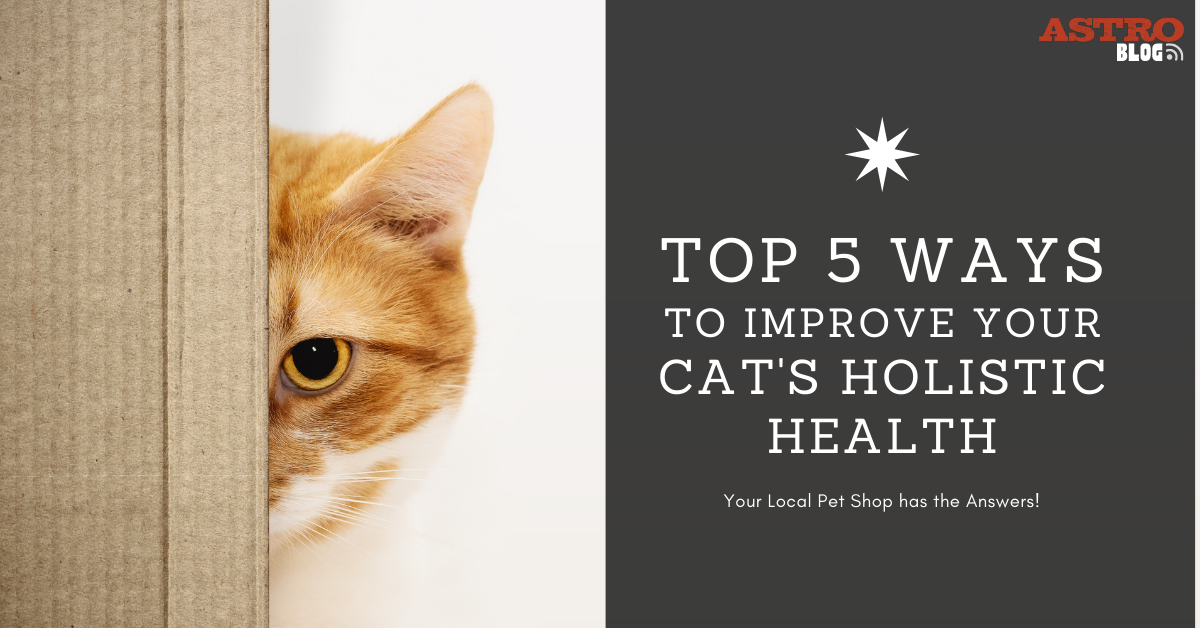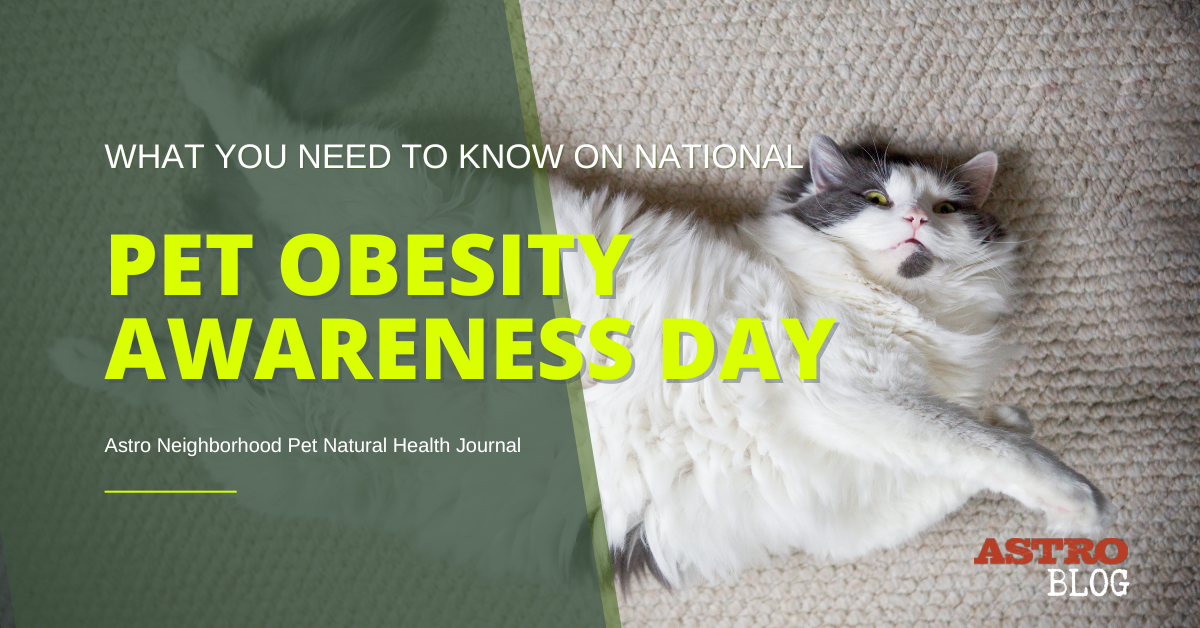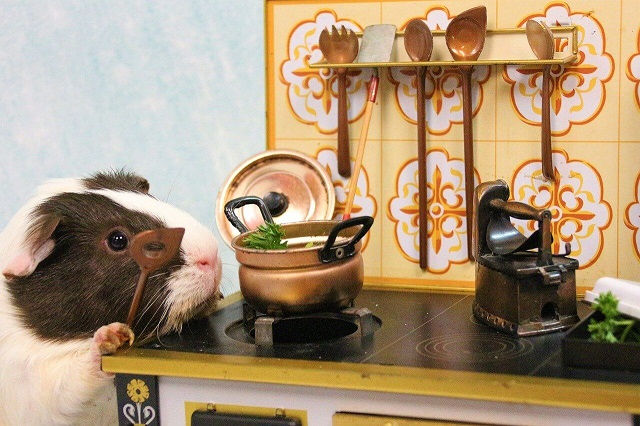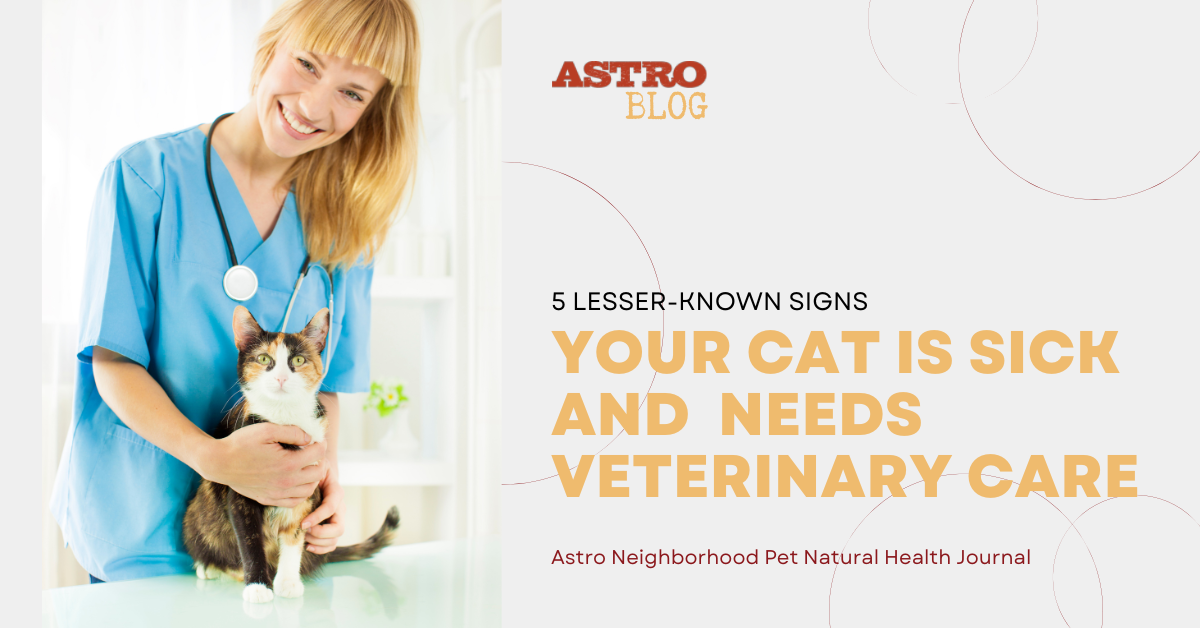February is National Cat Health Month, which is the perfect time to talk about improving your cat’s holistic health! Taking a holistic approach to health means coming at it from a variety of angles.
For example, when considering the holistic health of your cat, you might focus on their diet and supplement intake, activity level, the quality and safety of their litter and toys, etc. Taking such an integrated approach to health ensures your pet’s continued happiness and comfort throughout their (hopefully very long) life.
It can be challenging to know where to start, so we’ve provided 5 great tips on how to improve your cat’s holistic health below.
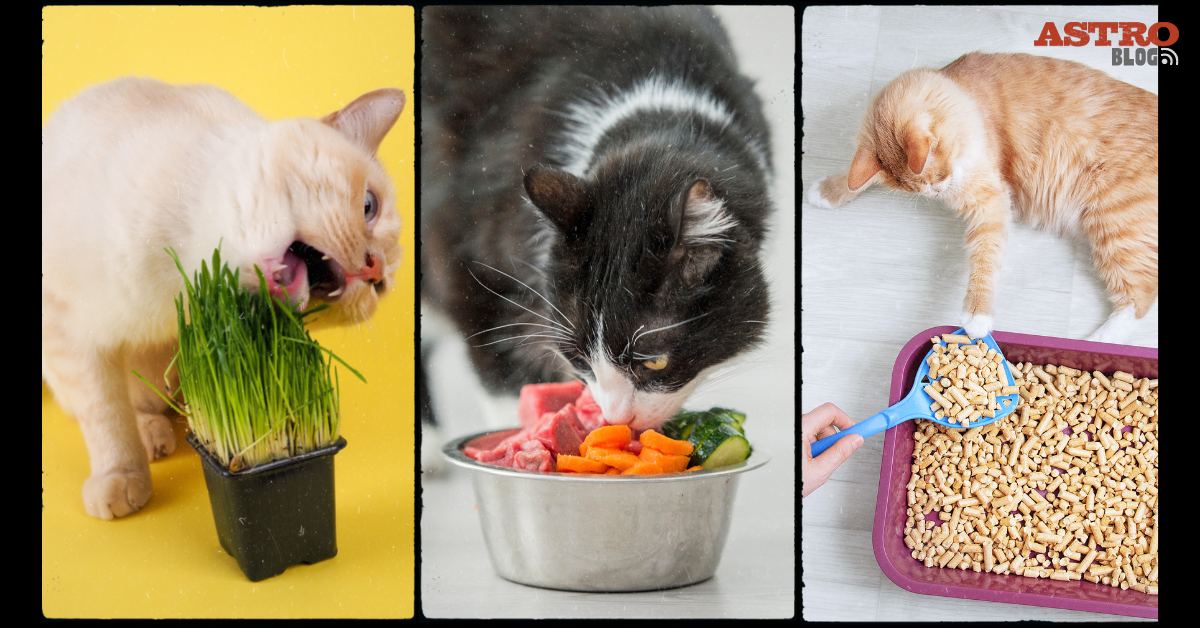
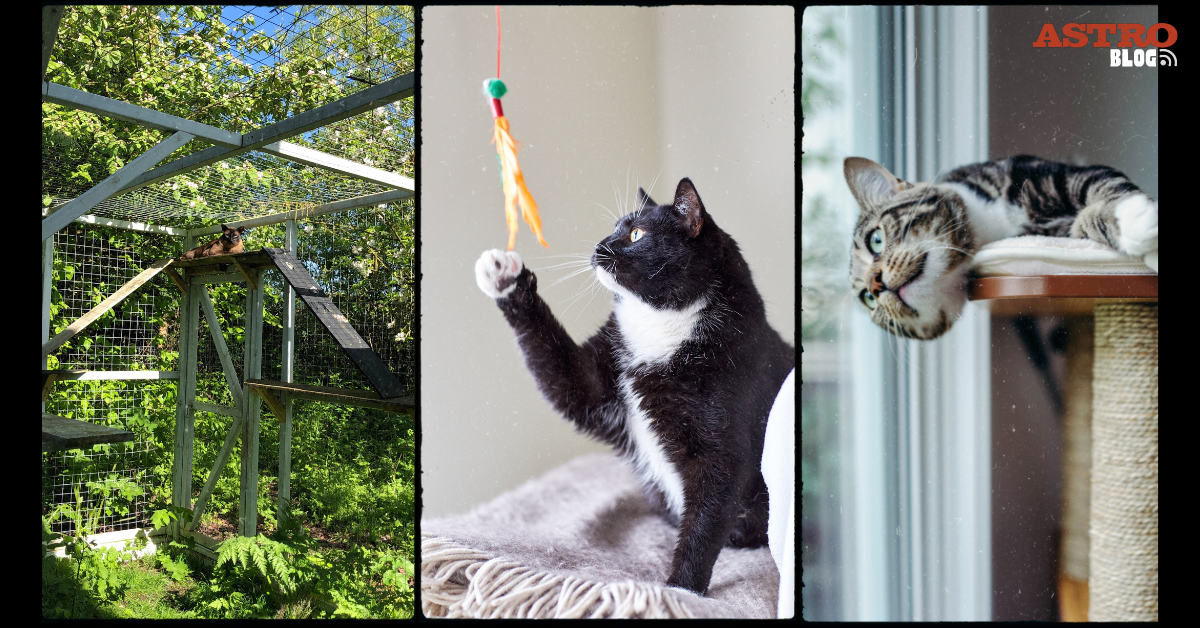


#1 Make Improvements to Their Diet
Cats are carnivorous by nature, which means they must eat meat to survive. Though most dry foods are specifically formulated to provide cats with the animal protein they need, there can be immense benefits to diversifying their diets and including raw and wet foods. Proponents of the raw diet method of feeding note several benefits for cats, including better digestion (cats’ digestive tracts are made to digest raw meats), healthier skin and shinier coats, higher energy levels, and healthier weights. Implementing a wet diet can help support your cat’s urinary tract health due to higher levels of hydration. Both wet food and raw food can be higher in protein and lower in carbohydrates than dry food, which is also better for cats’ digestion. Keeping variation in your pet’s diet so they get the proper nutrients can help improve their quality of life and longevity. Please keep in mind that if you plan on switching your cat to a 100% raw diet or make any other drastic diet changes, it’s a good idea to speak with their veterinarian or a certified pet nutritionist. Your Neighborhood Pet Shop can also be a fantastic resource when looking for recommendations, transitioning tips, and guaranteed options.#2 Look Into Cat Grass
Humans aren’t the only ones that should eat their greens! Certain grasses can help provide cats with extra nutrients, vitamins, and fiber that they don’t get from their normal diet. Alfalfa grass, oat grass, and barley grass have several purported benefits centered around nutrition, kidney disease prevention, and digestive support. Plants like catnip and lavender can be calming and can make a great now-and-then addition to your cat’s playtime or supplement routine. You can easily grow many of these grasses and plants yourself year-round, which also ensures that there are no pesticides or other toxic substances on them. Though cat grass and certain plants can be beneficial for your pet, many plants are not safe and can be poisonous, inducing common ones such as azaleas, daisies, mums, and daffodils. Therefore, it’s important to do your research before exposing your cat to a new plant of any kind.#3 Switch to a Natural Cat Litter
Many cat litter brands on the market tend to pollute the earth while also being unhealthy for your pet. The dust that comes from the silica and clay-based litter has been suggested to cause airway irritation in some cats, potentially causing respiratory issues and other health problems. Dust-free alternatives can be healthier for your cat and for other inhabitants in the home. Even better, you can avoid creating additional non-biodegradable waste while helping your cat by using natural litter made out of plant-based materials such as wood, corn, or wheat. That way, you will be protecting your companion from ailments while contributing to eco-friendly practices. Are you worried your cat may protest a change in their litter? No worries. Your Neighborhood Pet Shop can offer up some advice on how to best transition them from their old litter to a new one. And if it doesn’t work out, many brands guarantee their litters. So why not give it a shot?
#4 Create a Prosperous Environment
Domesticated cats’ wild counterparts can give us insight into what kind of environments and experiences our little felines might appreciate. Cats can greatly benefit from things like fresh air, private and elevated spaces to “perch” on, space to stroll around and play, and a view outside. Going without these things can negatively impact a cat’s health, weight, and mood over time. One way of providing all of these things at once is with a “catio” or cat patio. If you have a yard or an apartment with a balcony, creating a secure enclosure outside is a great way to keep your cat engaged and active and allow them to experience the outdoors without hurting themselves or the local wildlife. Some other suggestions include making a designated cat windowsill and installing cat shelves or a cat tree.#5 Play Often to Support Physical and Mental Health
Playing with your cat is essential to keeping it healthy and happy. A good goal to make is playing with your cat for 30 to 40 minutes total each day, split into shorter sessions. Staying active will help your cat stay fit or lose weight if needed, and it will support healthy joints and muscles. It is also good for cats to be able to ‘act like cats’, which includes using their prey drive while stalking and pouncing on toys. Consistent play will also help you build a better connection with your pet, as the more time you spend interacting with them, the more trusting and familiar they become. Furthermore, play is a way for cats to communicate and can help them learn how to socialize with both people and other cats.Final Thoughts
During National Cat Health Month, think about the little things you can do to improve your cat’s holistic health. It can be as simple as playing with them for an extra 20 minutes per day or as involved as planning an entirely new diet. We all want to see our cats thrive, and if we can help them live longer and more comfortably, that’s a win for them and for us. BONUS! Check-in with your Neighborhood Pet Shop. They could be running these fantastic Offers brought to you by your favorite healthy cat brands!


